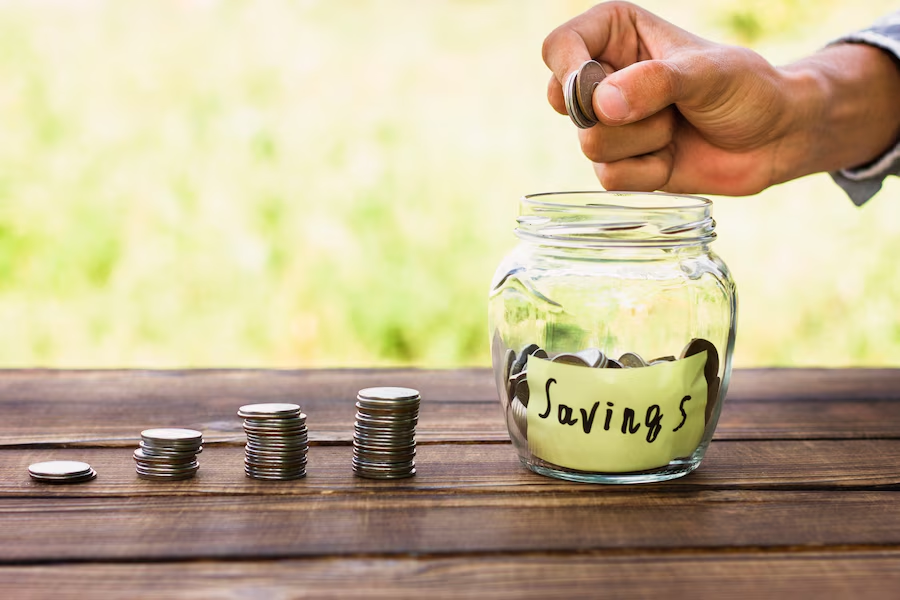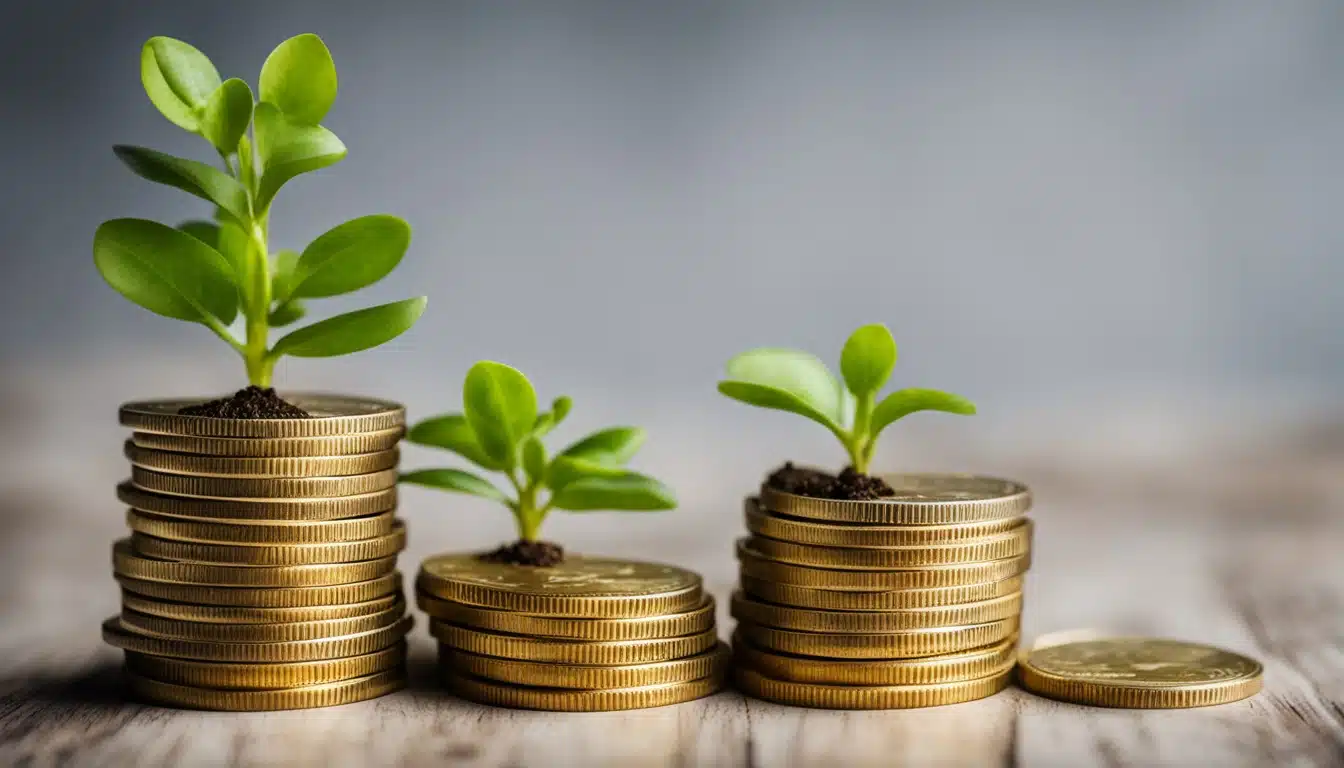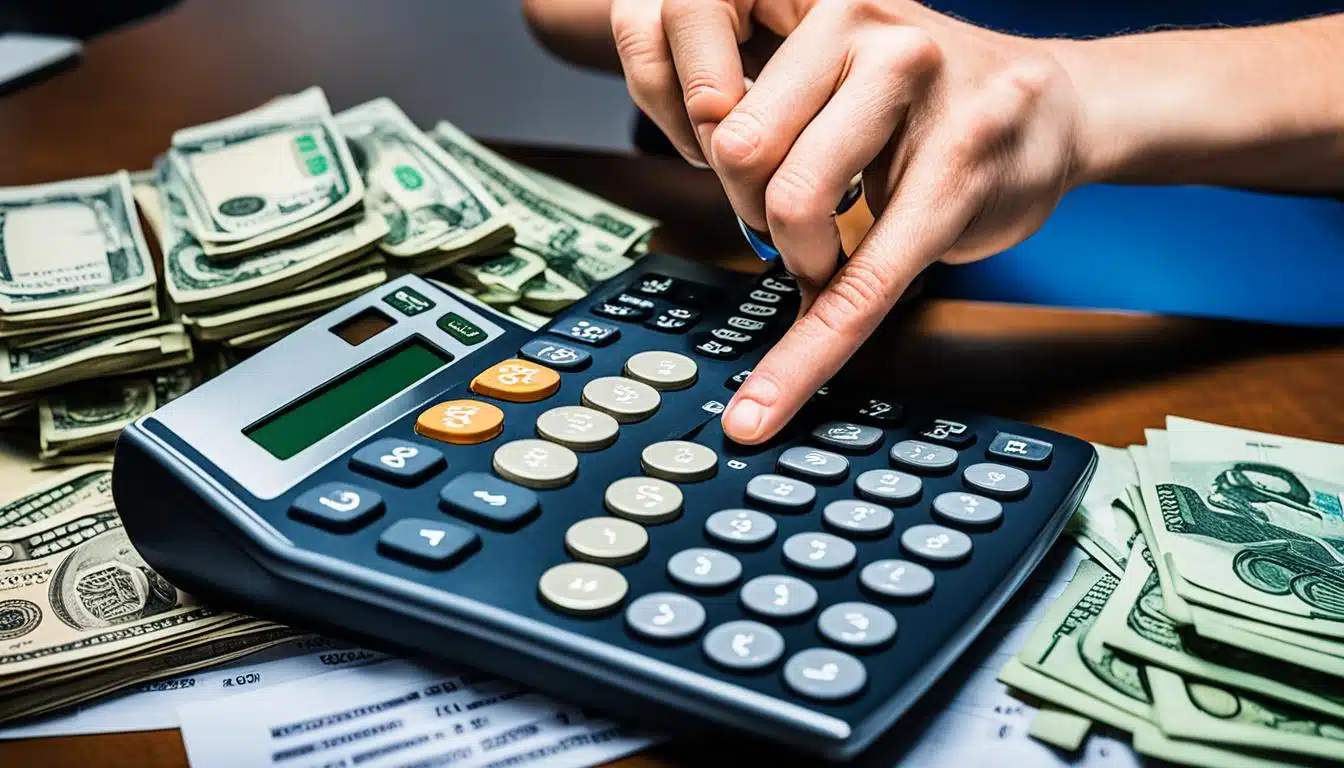Having a good Emergency Fund Savings Tips can make a huge difference. It can prevent you from facing tough financial moments. A recent study shows that only 44% of Americans could handle a £1,000 unexpected bill. This is because the cost of living is going up, making it harder to save for surprises.
Without enough saved for emergencies, people might have to borrow money. This can start a cycle of debt that is difficult to break.
The second source calls an emergency fund money saved only for big surprises. These surprises could be things like problems with your car, house, or sudden medical expenses. Or even if you lose your job. If you don’t have savings for these, they could put you in debt that is tough to get out of.
The third source gives useful advice on saving for emergencies. It suggests making saving a regular part of your budget and finding ways to save more every month. This could include things like using special savings offers, saving part of your salary before you even get it, and saving when you buy something big. The article also advises putting savings where you can’t easily spend them, like in a bank, rather than at home where it might get spent accidentally.
Key Takeaways
- An emergency fund is a crucial financial safety net that can protect individuals from unexpected expenses and financial shocks.
- Building an emergency fund requires creating a savings habit, managing cash flow, and taking advantage of one-time opportunities.
- The recommended amount for an emergency fund is three to six months’ worth of expenses, but the exact amount can vary based on individual circumstances.
- Keeping the emergency fund in a bank or credit union account, or on a prepaid card, can help ensure the funds are readily accessible when needed.
- Regularly monitoring the growth of the emergency fund and celebrating milestones can help maintain motivation and ensure long-term financial security.
What is an Emergency Fund?
An emergency fund is key in financial planning and managing personal finances. It’s an amount of money kept for sudden costs. These could be car or home repairs, medical fees, or if you lose your job temporarily.
Definition and Purpose
The goal of having an emergency fund is pretty clear. It’s to shield you from financial hits you didn’t expect. If you don’t have one, you might need to rely on credit or loans. This could lead to hard-to-pay-back debts.
Having an emergency fund is like a safety net for your money. It means you can handle hard times without hurting your finances long-term.
Common Examples of Emergencies
Here are some usual money emergencies an emergency fund can help with:
- Car repairs, like fixing a flat tyre or engine trouble
- Home fixes for a roof that leaks or a fridge that stops working
- Medical costs for sudden visits, medicine, or insurance co-pays
- Losing your job, getting sick, or injured which stops your income
With an emergency fund, you don’t have to lean on credit cards or loans. These quick fixes can land you in a deep debt hole. Your fund acts as a buffer, keeping your finances stable and strong when life surprises you.
Also Read :How Do I Create A Personalized Financial Plan?
Why Do You Need an Emergency Fund?

An emergency fund is crucial for everyone. It protects you from sudden financial troubles, even small ones. Without it, unexpected costs could push you into debt. This debt is not easy to repay.
Studies show that those without enough savings find it hard to recover from a financial hit. They might turn to credit cards or loans. This can start a cycle of difficult debt.
Protecting Against Financial Shocks
Having an emergency fund means you might not need to borrow money. This is important because borrowing can make the original problem cost even more. This is due to interest and fees, making things harder.
Avoiding Debt and Credit Card Usage
If you have savings for emergencies, you can protect yourself from falling into debt. It’s okay to use your emergency fund when needed. But remember, topping it up is key. It ensures you stay financially ready.
Also Read : How To Achieve Financial Independence?
How Much Should Be in Your Emergency Fund?
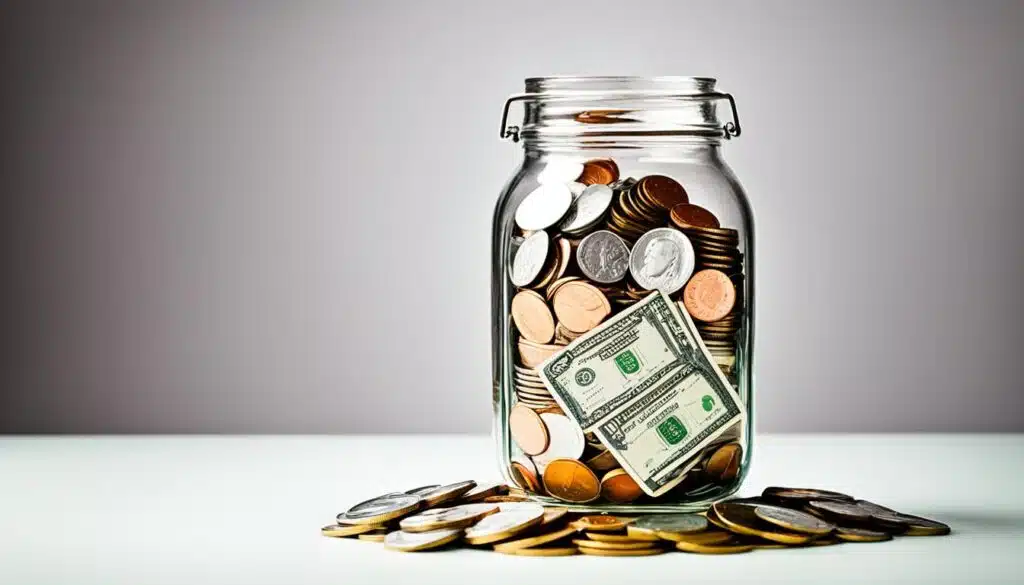
Building an emergency fund changes for everyone. But, experts say saving between 3 to 6 months’ worth of living expenses is smart. This money is for unexpected things like needing an urgent car fix, big hospital bills, or if your job disappears for a short while.
Recommended Amount: 3-6 Months’ Expenses
A emergency fund of 3 to 6 months’ worth is what many advisors recommend. It lets you handle unexpected expenses without borrowing money. This could save you from debt and help keep your finances steady.
Factors to Consider
Your emergency fund might need to be bigger or smaller depending on your life. If you’ve a working spouse, 3 months’ expenses could be enough. But if you work for yourself or have a family that depends on you, saving up to 8 months’ of expenses is wise.
It’s also important to think about your health and disability insurance when working out how much you need in your emergency fund. If your insurance doesn’t cover a lot, saving more can help with health costs later on.
Also Read :Learn Proven Real Estate Investment Strategies For Success
Emergency Fund Savings Tips
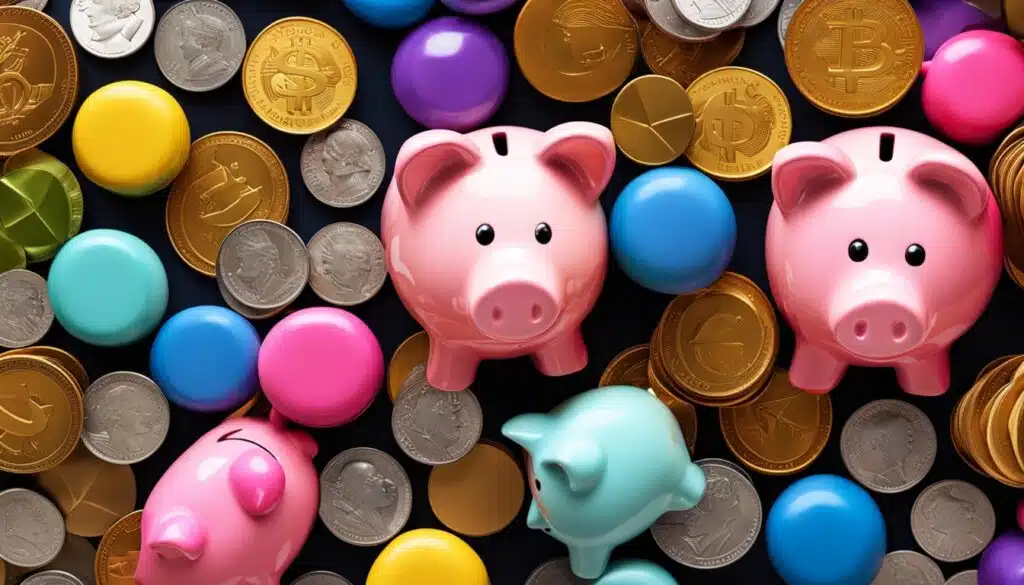
Creating an emergency fund is key to long-term financial peace. Follow these practical tips to build a solid savings net in the UK:
Create a Savings Habit
Get into the habit of saving regularly, even with small amounts. Make saving money part of your monthly budget. Put it at the top of your priorities and not as an extra thought.
Manage Your Cash Flow
Watch your money carefully to see where you can cut costs. By reducing spending and finding extra cash, you can boost your emergency fund. Look at where you can spend less, like on fun things or by bargaining with bills.
Take Advantage of One-Time Opportunities
Big unexpected sums, like tax refunds or bonuses, can greatly increase your savings. Instead of spending it right away, put a decent amount into your emergency fund.
Automate Your Savings
Automate transfers from your regular account to your emergency one. This way, you save without having to remember every time. It’s a stress-free method for saving.
Save Through Your Employer
Use your employer’s system to have a part of your pay go straight into savings. It’s a simple way to add to your emergency fund without much effort.
Also Read : What Are Effective Stock Market Investment Tips For Beginners?
Where to Keep Your Emergency Fund
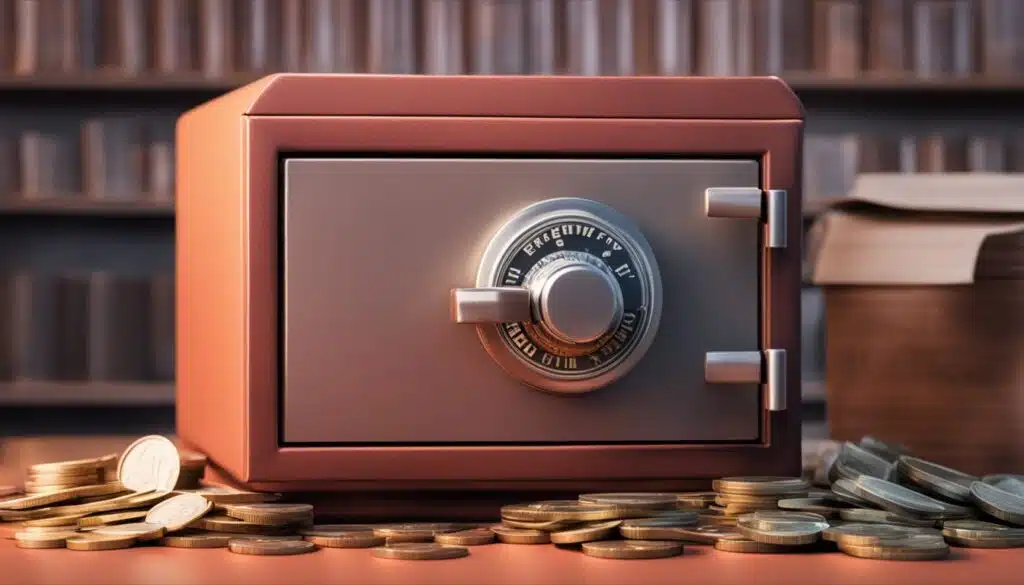
Deciding where to store your emergency fund needs thought. You want your money safe, easy to reach, and making some profit without much risk.
Bank or Credit Union Account
A bank or credit union savings account is a common option. It’s easy to get your money and it earns a little interest. Just check if there are any charges or the need for a minimum balance.
Prepaid Card
Keeping your fund on a prepaid debit card is another choice. It can help keep your savings separate from what you spend daily. Prepaid cards might offer no monthly fees or automatic fund transfers. But, make sure to look into any possible extra costs or rules of the card you pick.
Cash at Home (Not Recommended)
Keeping cash at home isn’t usually a good idea. It could get stolen, lost, or damaged. Also, it won’t earn any interest. Unless your home can keep the cash really safe from theft, fire, and water, a bank is a better option.
Also Read :What Are The Best Investment Strategies For Beginners?
When to Use Your Emergency Fund
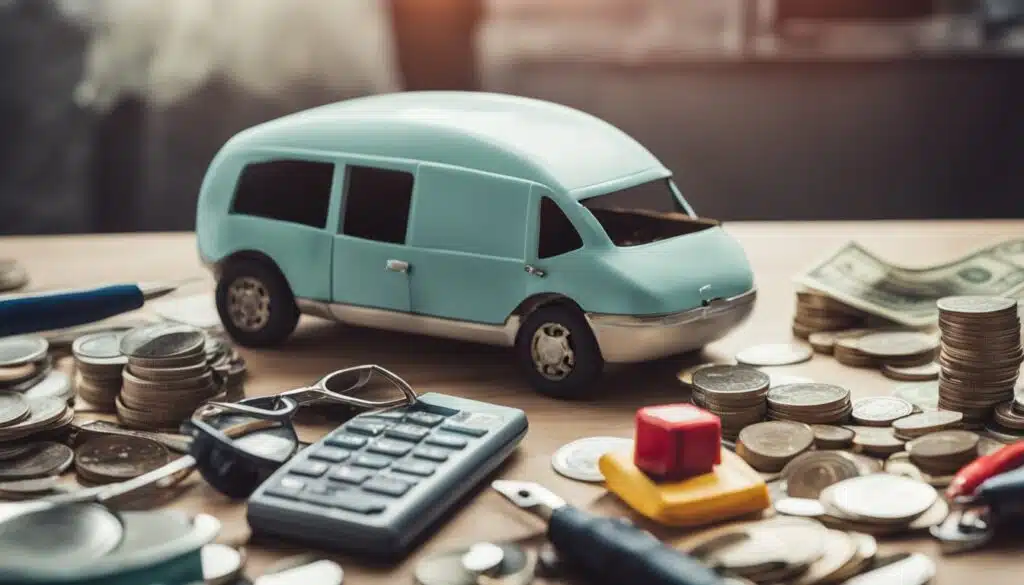
It’s important to know when to use your emergency fund. Make clear rules about what is a real financial emergency. The second source highlights the need to differentiate between true emergencies and everyday costs.
Defining Financial Emergencies
Financial emergencies are sudden, urgent, and vital costs. They could greatly shake up your financial situation. These include big car fixes, unexpected medical bills, or lost job income. Setting these boundaries ensures your emergency fund does its job.
It provides a financial safety net. This keeps you from going into debt or facing interest charges.
Avoiding Debt and Interest Charges
Having an emergency fund helps avoid using credit cards or loans for sudden costs. This keeps a big one-time expense from becoming harder to manage. By using your emergency savings, you safeguard your long-term financial health.
Still, it’s vital to rebuild the fund after using it. This keeps you financially ready for the next surprise.
Also Read :What Skills Do You Need For A Finance Manager Jobs?
Replenishing Your Emergency Fund
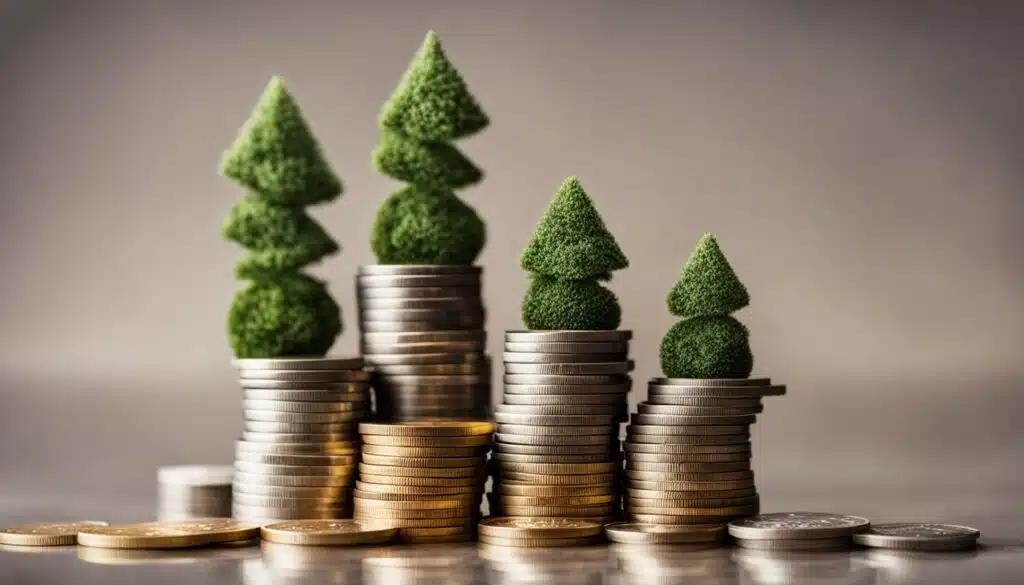
After using your emergency fund for sudden costs, it’s vital to rebuild it. The third piece underlines this need. It says unexpected expenses might still come up. For this, you will need to save again. Here are some steps to add money back into your emergency fund:
Rebuilding After Using It
If you’ve tapped into your emergency savings, focus on topping it back up. This way, you’ll be ready for the next surprise bill. Look at your budget closely. You might find some places to cut back. Use this saved money to add to your emergency fund.
Adjusting Savings Contributions
Changing how much you save each month is another good idea. You could put more money into your emergency account. This might mean bigger regular transfers or one-off payments.
Or, you might choose to save in different ways. Cutting down on things you don’t need can create more cash. Or, you could look for ways to make extra money. This could be through a side job. Both of these could help you save more for emergencies.
Your aim should be to have three to six months of living expenses in your fund. Or, you could aim for the figure that suits your financial situation. With this saved, you’ll feel more secure. You’ll be better placed to handle any financial surprises that come your way.
Tracking Your Progress
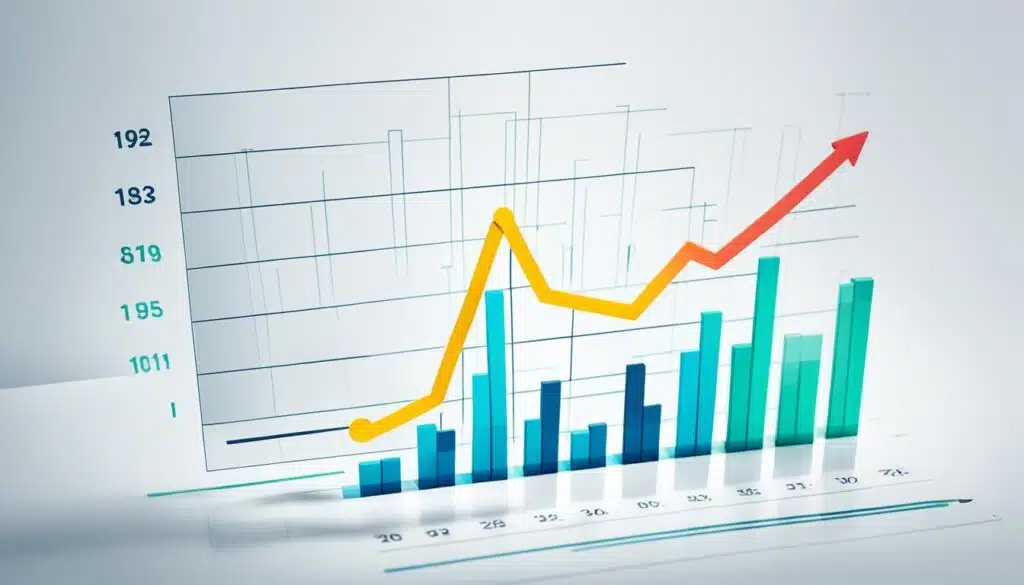
Starting an emergency fund is a big financial aim. It’s vital to watch how you’re doing. Seeing how your savings grow gives a good feeling. It also helps you keep adding to your safety money.
Monitoring Your Savings Growth
Setting up alerts or checking your balance regularly are smart ways to keep track. You might get notifications from your bank’s app or check online often. This way, you’ll notice when you hit savings milestones. It keeps you on track to the amount you want to save.
Celebrating Milestones
When you add more to your emergency fund, it’s good to praise yourself. It could be for saving enough to cover a month’s bills. Or even just for watching your fund grow. Such times of celebration can keep you going and stay mindful of your savings efforts.
Find little ways to congratulate yourself. Maybe treat yourself to a nice meal. Or use a bit of your emergency fund for something enjoyable. By celebrating these moments, you remind yourself why saving is crucial. And you’ll keep at it for a better financial future.
Also Read: Wealth Wisdom: Essential Money Advice For Every Stage Of Life
Conclusion
In conclusion, making an emergency fund is essential for financial safety. This guide has explained all about it. From what it is to how to keep it and even how to top it up.
By using this advice, people in the UK can create a financial safety net. It will help protect them from unexpected financial needs.
It’s important to check on your emergency fund and feel good about saving. Doing this helps to stay motivated. It also ensures the fund grows over time.
Having a strong emergency fund means you’re prepared for hard times. It brings financial stability and peace of mind when facing challenges. So, focusing on saving like this is a wise money move.
The emergency fund is like a safety net for your money. It protects you from sudden expenses or unemployment. This way, you can steer through life’s ups and downs with less financial worry.
A good emergency fund offers peace of mind for the future. By setting one up and topping it up as needed, you’re ahead of financial troubles. This helps you to be ready for any surprises life throws your way.
FAQs
What is an emergency fund?
An emergency fund is like a safety net. It’s money you keep ready for unexpected costs. This could be for fixing your car, your home, paying medical bills, or if you lose your job. The main goal is to feel financially safe, knowing you have money for surprise expenses.
Why do I need an emergency fund?
Having an emergency fund matters a lot. It’s there to protect you from financial hits, big and small. If you don’t have savings, a sudden cost could put you in debt. This fund stops you from needing to use credit cards or loans. Those can make small costs much bigger with added interest and fees.
How much should be in my emergency fund?
The usual advice is to save three to six months’ worth of your expenses. But, that number might change based on your situation. For example, if you’re the only one earning in your family, you might need more. Sometimes, special circumstances mean you should save even more to feel secure.
What are some tips for building an emergency fund?
Here’s how to start saving for your fund:
– Make saving a habit: Put money away every month, or automate your savings.
– Cut down on spending: Look for ways to reduce your expenses.
– Use extra money wisely: Putting bonuses or tax refunds into your fund can really boost it.
– Set up automatic savings: Make saving easy by automating transfers.
– Consider saving with help from your employer: Some companies offer easy ways to save from your salary.
Where should I keep my emergency fund?
You have a few safe options for where to keep your fund:
– A bank or credit union account: Easy to reach if you need it and might earn interest.
– A prepaid card: A safe choice for keeping your savings.
– Keeping cash at home: This isn’t the best idea as it can be lost or stolen.
When should I use my emergency fund?
Your fund is for real financial emergencies. It might be for big medical bills, car fixes, or if you suddenly lose your job. Not every unexpected cost is an emergency; try to save it for the big things. This can stop you from getting into debt by avoiding credit cards and loans.
How do I replenish my emergency fund after using it?
After a big expense, focus on filling your fund back up. You might increase your monthly savings or find other ways to save money. The aim is to get back to having three to six months’ worth of expenses saved, or whatever is right for you.
How can I track my progress in building my emergency fund?
Keep an eye on how your savings grow. You can do this by setting up alerts or by checking your balance regularly. Celebrating saving milestones helps you keep up the good work. It supports you to continue building your financial safety net.





